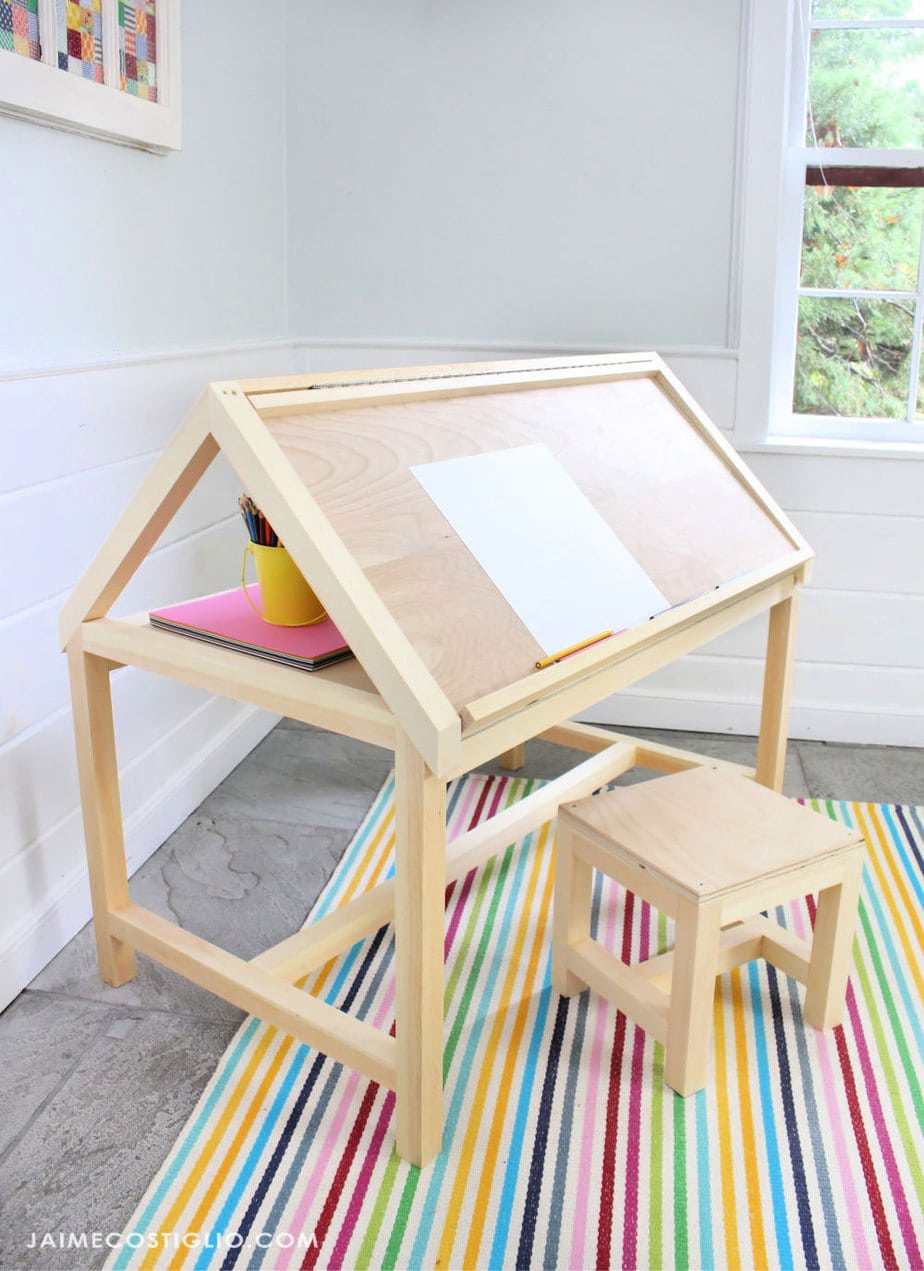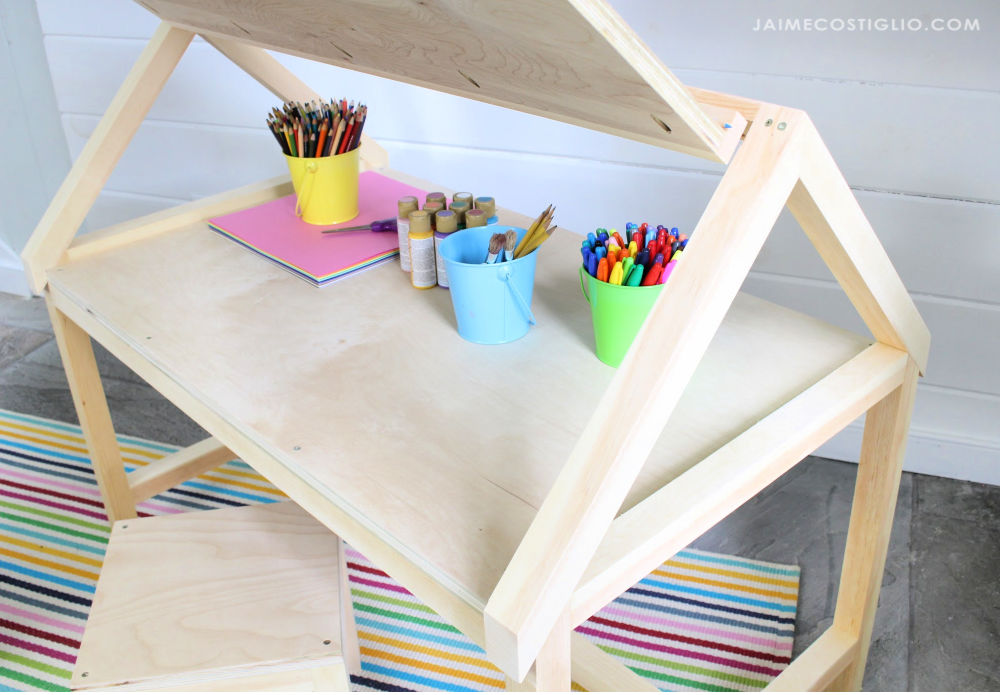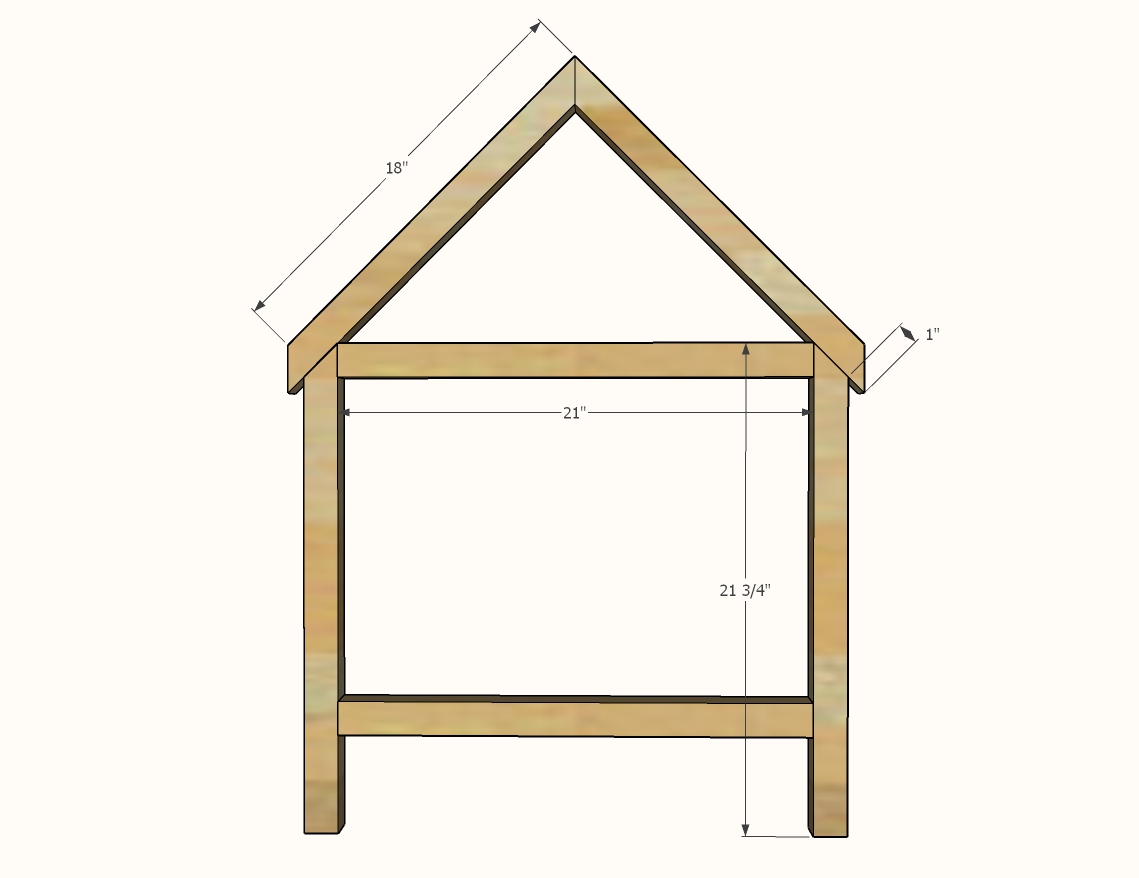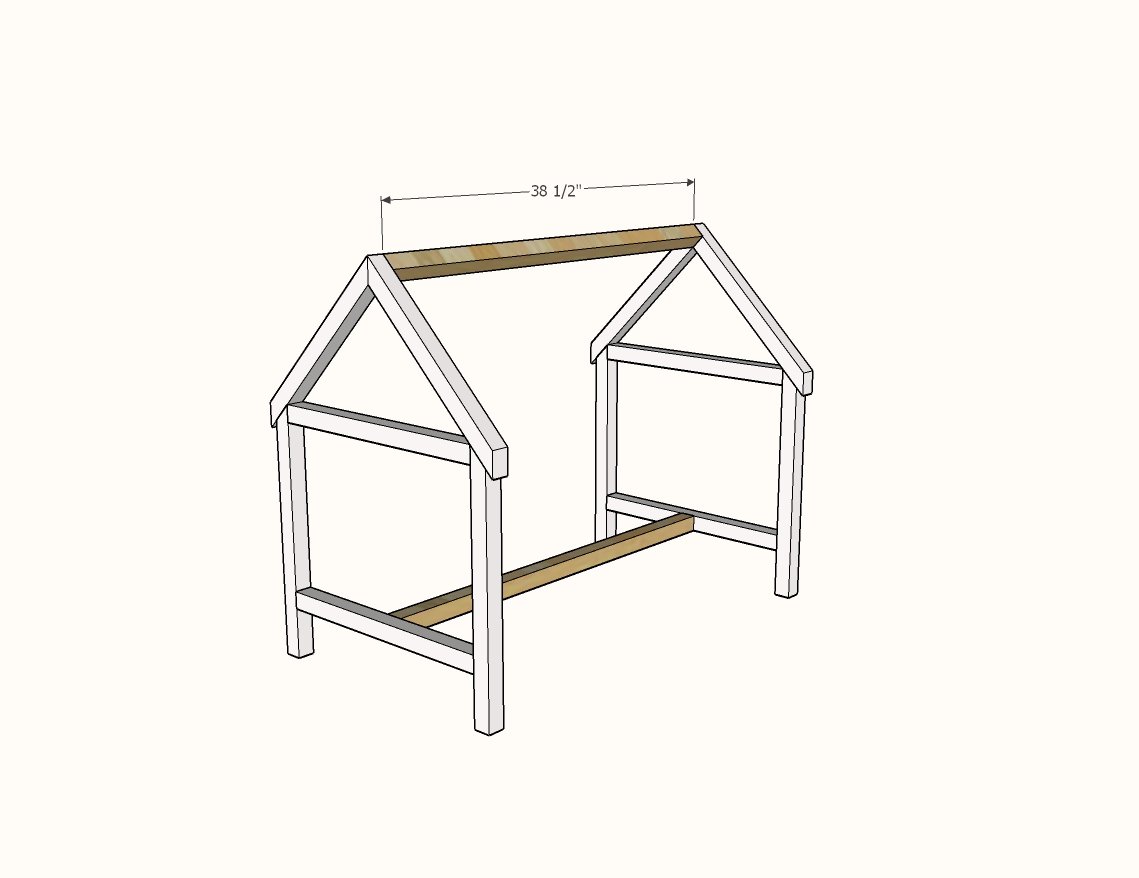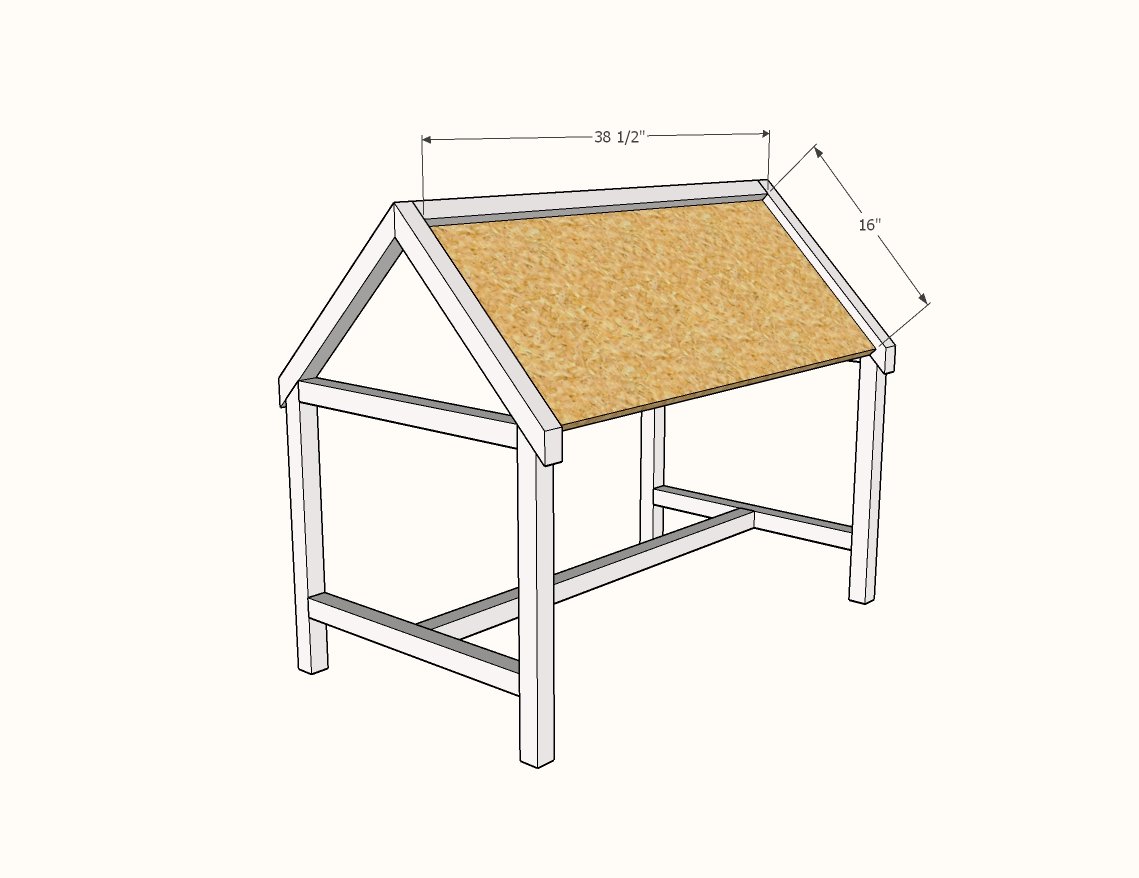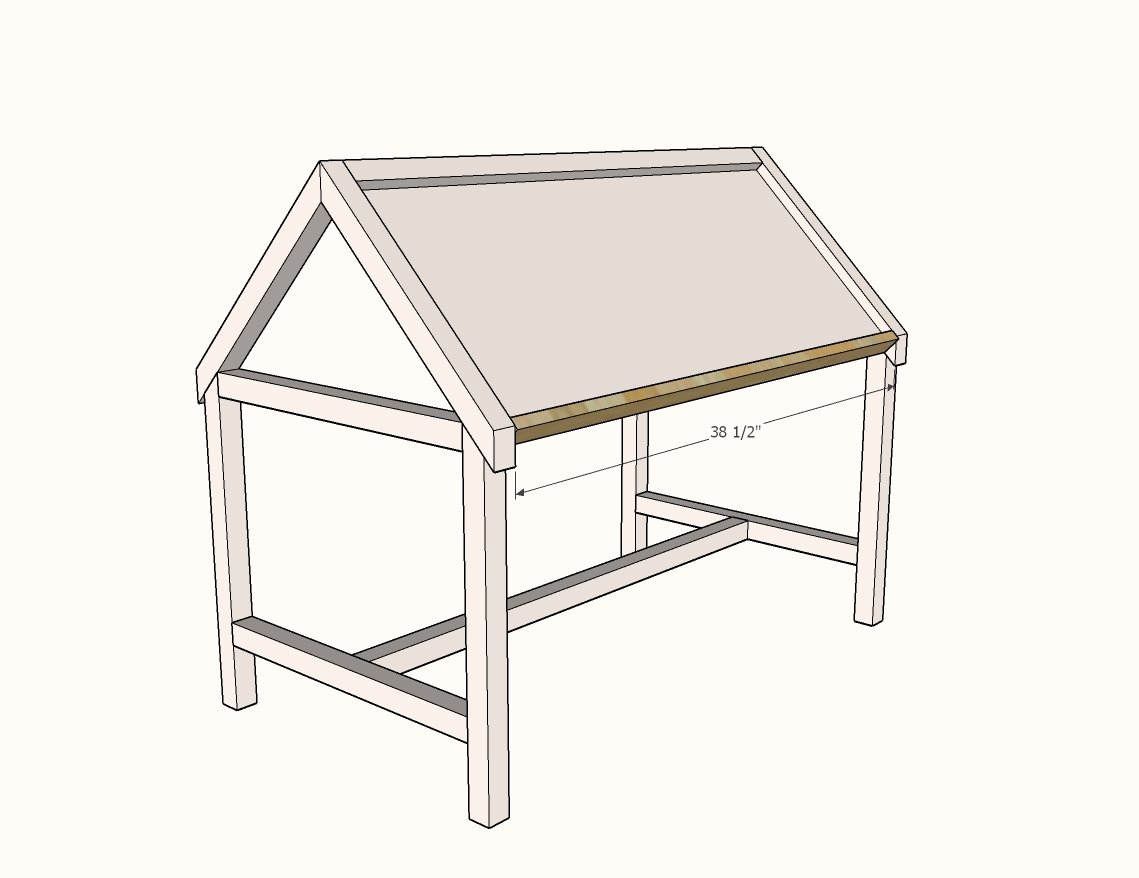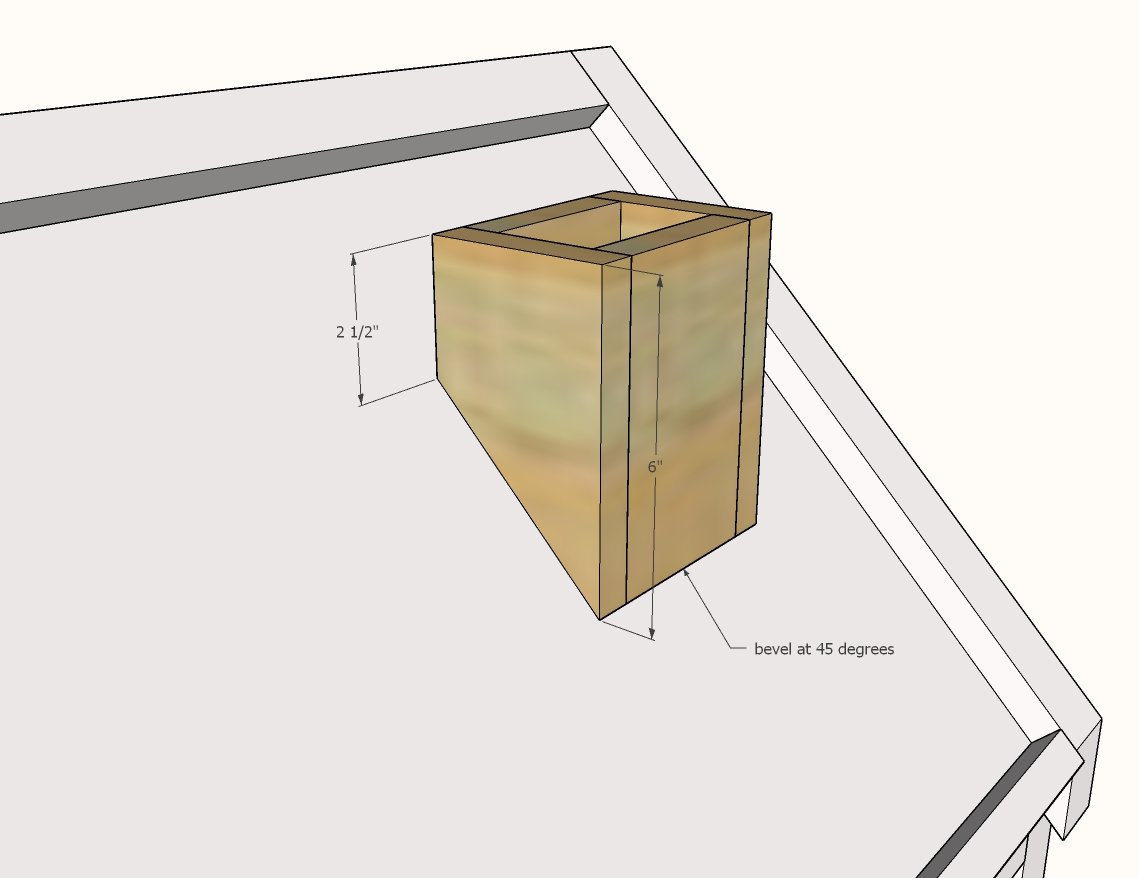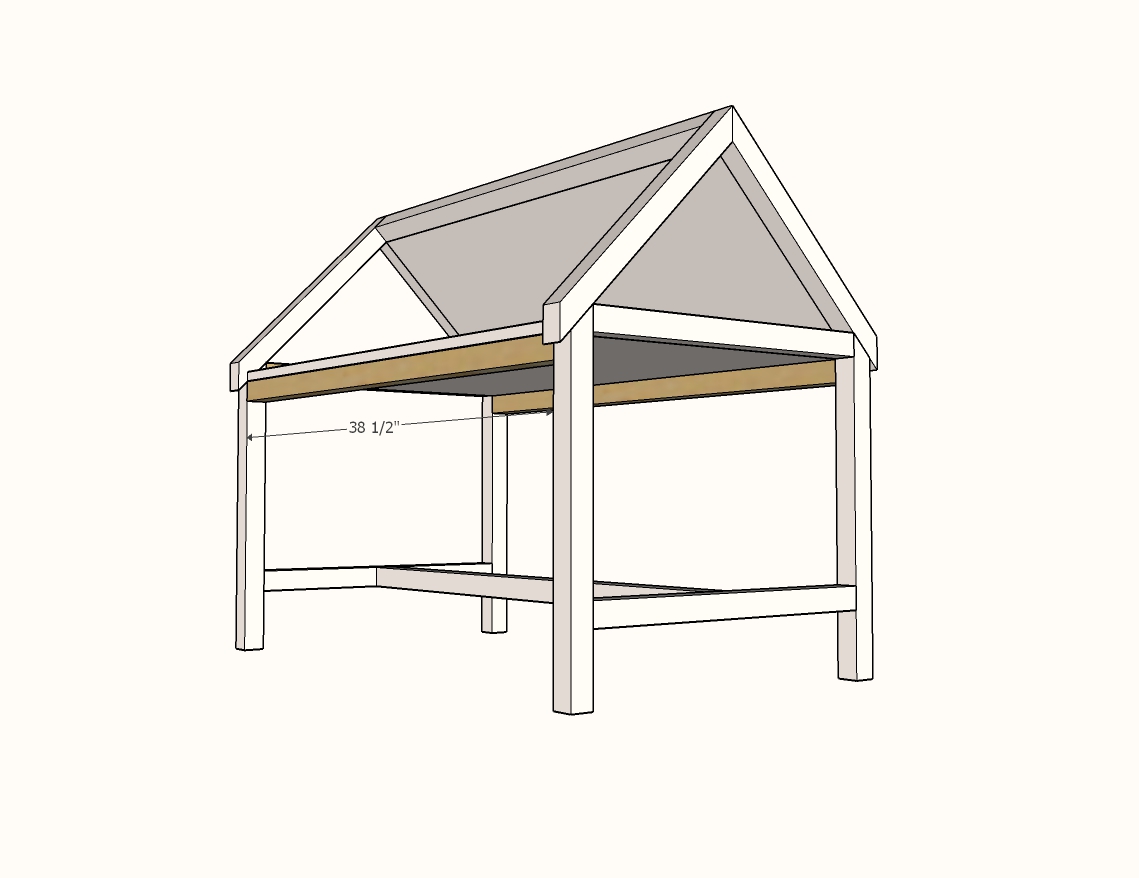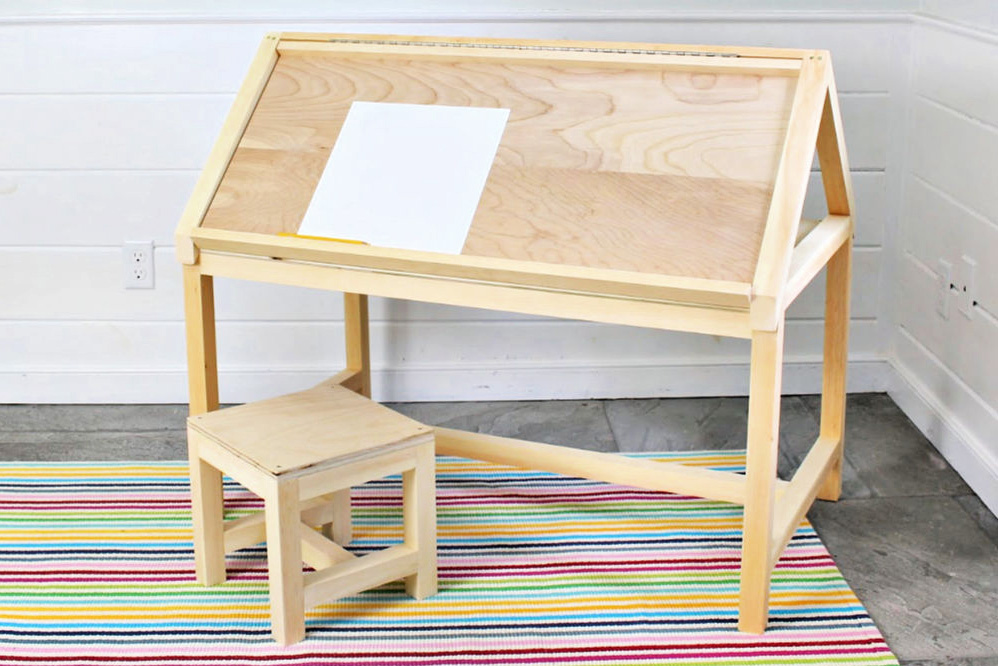
This little house shaped play table features and angled desktop perfect for coloring or drawing. Flip it around for storage and a flat work surface. Our free DIY plans make it easy to build - step by step plans with diagrams and shopping list from Ana-White.com
Dimensions
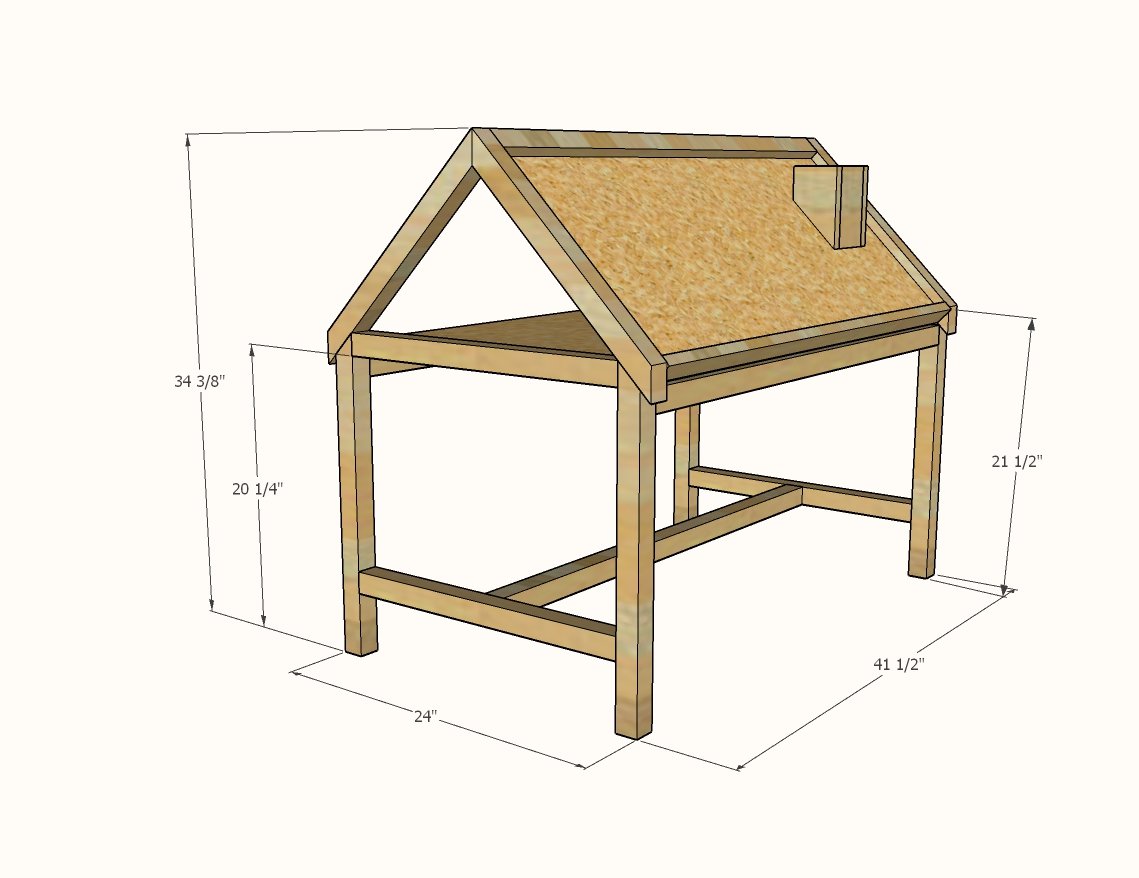
Dimensions shown in diagram
Preparation
Shopping List
- 5 - 2x2 @ 8 feet long
- 1 - 1x2 @ 4 feet long
- 1 - 3/4" plywood @ 4' x 4'
Common Materials
Cut List
- 4 - 2x2 @ 18" - long point to short point measurement, both ends cut at 45 degrees, ends ARE parallel
- 4 - 2x2 @ 21-3/4" - longest point measurement, one end cut at 45 degrees
- 4 - 2x2 @ 21"
- 4 - 2x2 @ 38-1/2"
- 1 - 3/4" plywood @ 38-1/2" x 16"
- 1 - 1x2 @ 38-1/2"
- 1 - 3/4" plywood @ 38-1/2" x 23-1/4"
Pencil Holder
- 2 - 1x4 @ 6" - longest point measurement, one end cut at 45 degree angle
- 1 - 1x4 @ 2-1/2"
- 1 - 1x4 @ 6" - longest point measurement, one end cut at 45 degree bevel
Instructions
Step 1
Step 2
Step 3
Step 5
Step 6
Project Type
Room
Seasonal And Holiday


